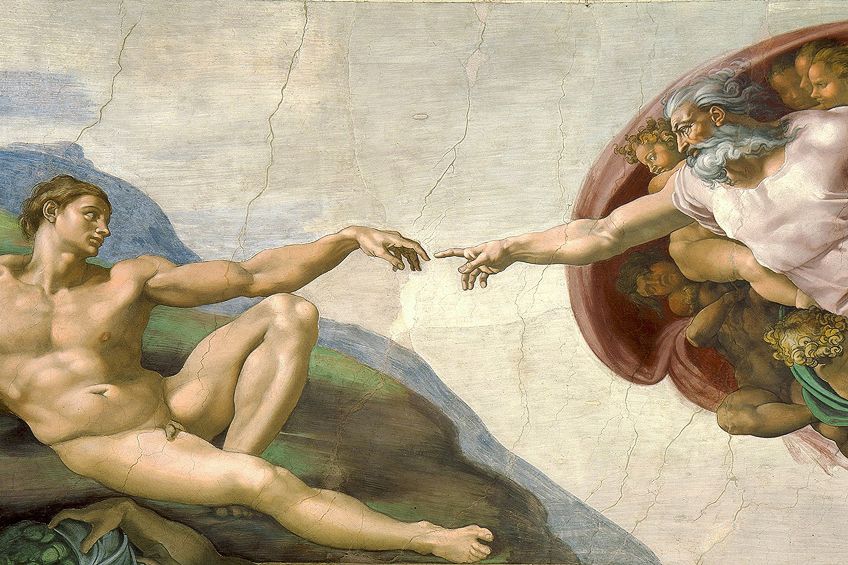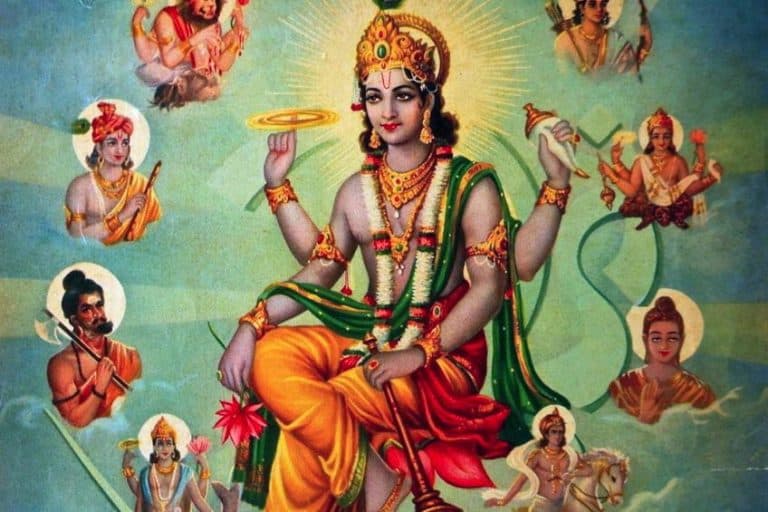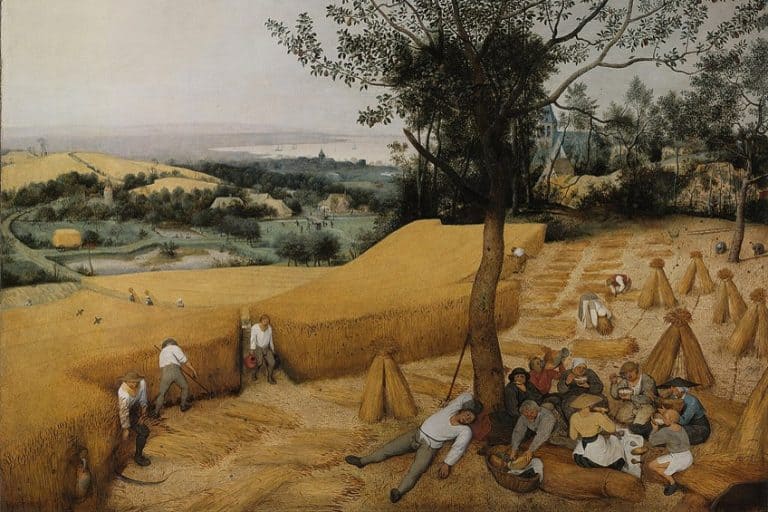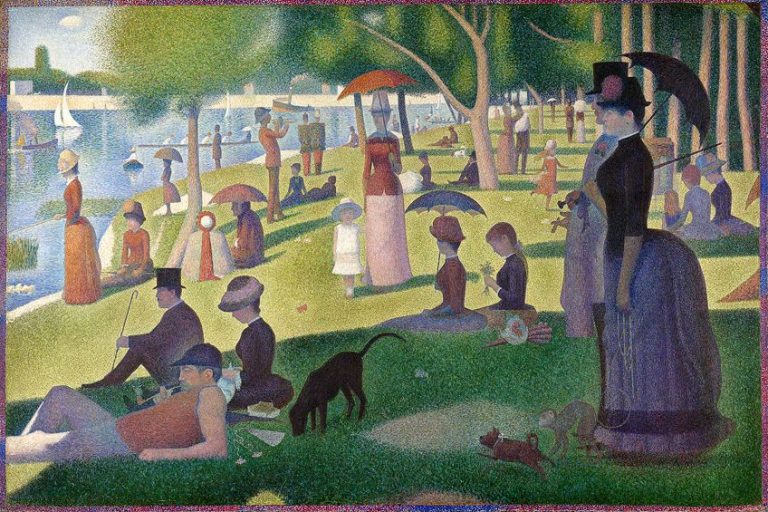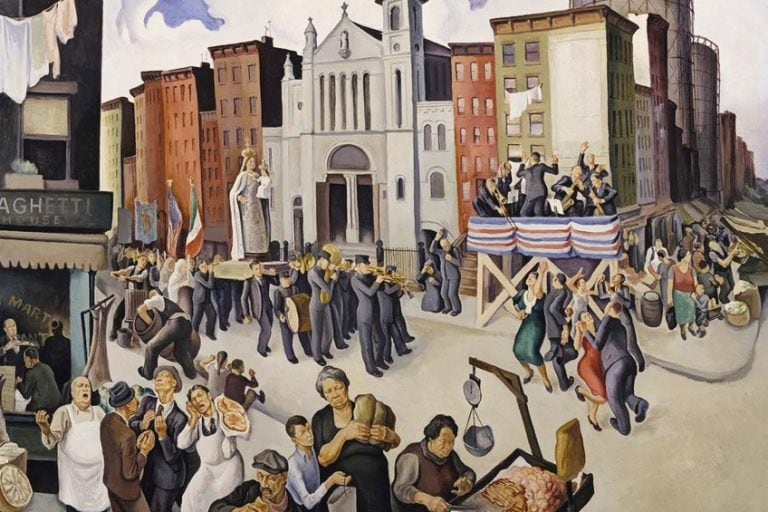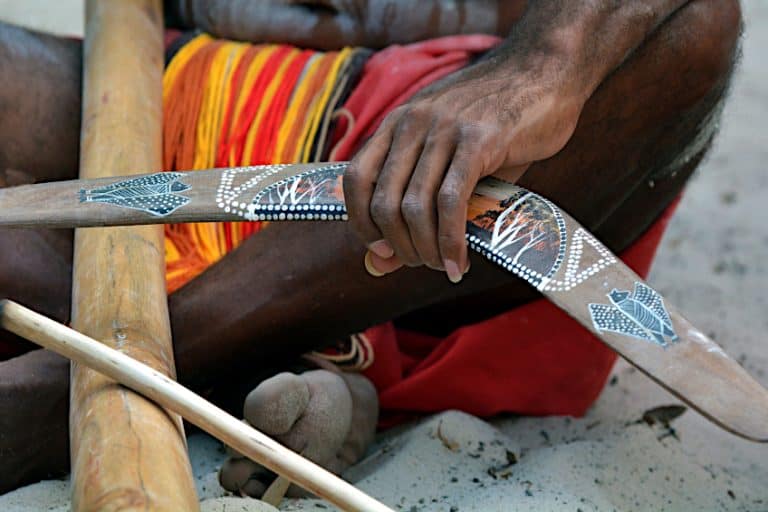High Renaissance Art – The Pinnacle of the Renaissance
The High Renaissance was the pinnacle of the Renaissance period in European history and the visual arts, especially in Italy. This period culminated in several great, if not genius, artists, who would be remembered throughout history and pop culture. Below, we discuss the High Renaissance as an artistic period and the historical influences that shaped it.
Renaissance Art Periods Timeline

The Historical Background of the High Renaissance
The Renaissance period started around the 1300s (14th Century CE) until around the 1600s (17th Century CE). This period developed after the Fall of Rome in around 476 CE, during what was known as the Medieval or Dark Ages within European history. The most notable art period during these dark times was that of Gothic art, and the art style after the Renaissance was called Mannerism.
The Renaissance period in visual arts has been divided into Early and High. The High Renaissance time period was the peak of artistic genius and talent, and, believed to have started when Leonardo da Vinci created The Last Supper during the 1490s, it lasted until around 1527.
This was a period where artists utilized techniques from the Early Renaissance and seemingly perfected them to create masterpieces.
The term “High Renaissance” was officially utilized during the 1800s, first dubbed by the Swiss historian Jacob Carl Burckhardt, who referred to it as hochrenaissance in German. However, the term “Renaissance” has a history of its own and dates back to when the French historian Jules Michelet used the word “renaissance” in 1855 to describe how the Middle Ages ended and a new period in Europe’s culture evolved. This period was almost like a “re-birth”, and that is exactly what the French term Renaissance means.
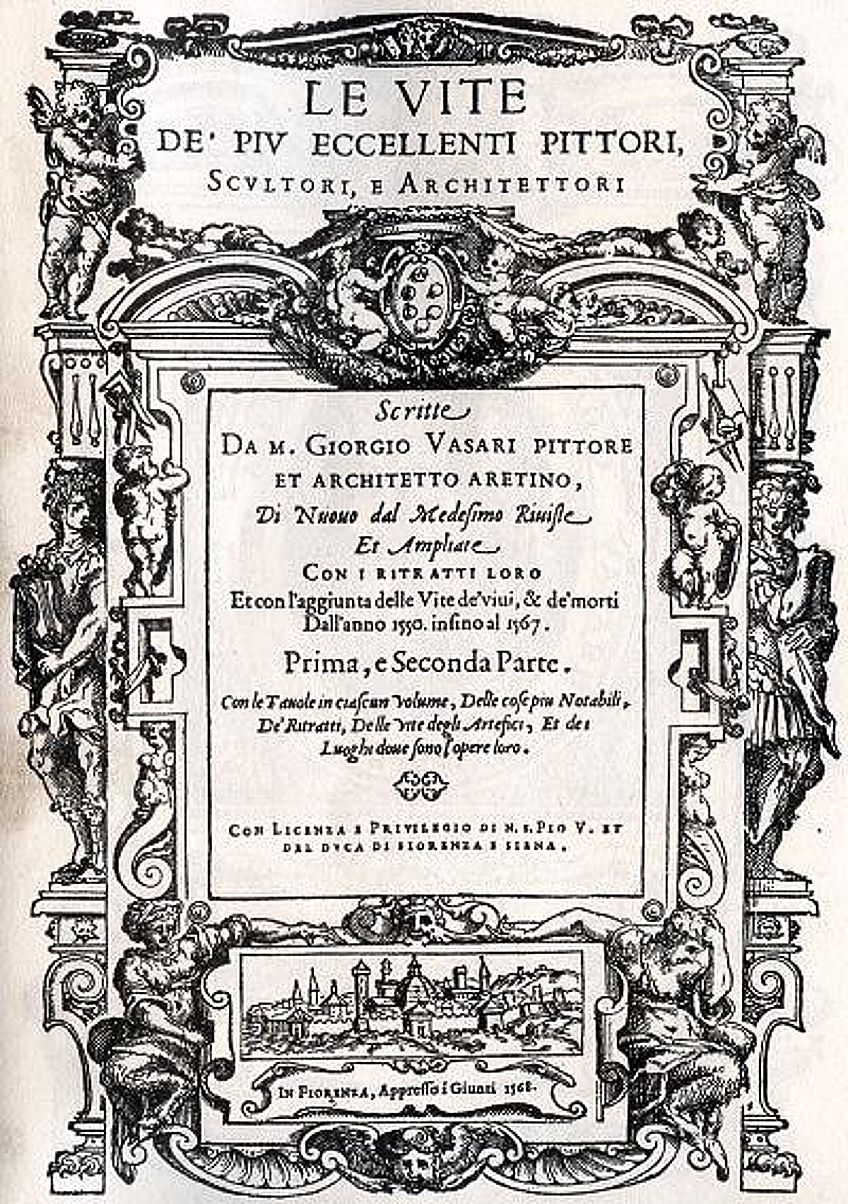
This concept of “re-birth” was not new though. The Italian historian, artist, and architect Giorgio Vasari utilized the term in his famous publication The Lives, short for, The Lives of the Most Excellent Painters, Sculptors, and Architects (1550). The text was considered one of the first art-historical accounts detailing the Italian Renaissance, providing biographies of various artists during this period.
But, to go even further, the work of German historian and archaeologist Johann Joachim Winckelmann influenced other theorists and artists. His publication History of the Art of Antiquity (1764) became a seminal record and chronology of antiquity and Classical Art from ancient civilizations like the Egyptians, Etruscans, Greeks, and Romans.
Jacob Burckhardt, on the other hand, was considered one of the “founding fathers” of cultural history. He explored the Renaissance period in a holistic manner, focusing on all the aspects that contribute to how the culture developed and evolved, from politics to art, and how these interrelate and affect the other.
His famous publication titled, The Civilization of the Renaissance in Italy (1860), was about the Italian Renaissance time period and specifically its historiography. He also published a succeeding publication titled, History of the Renaissance in Italy (1867).
A Brief Glance at the Early Renaissance
To have a better understanding of the High Renaissance time period, it is useful to briefly discuss the Early Renaissance for some context and how this art period evolved. The Early Renaissance started around the 1400s to the 1490s CE.
Artists during this period were influenced by philosophical concepts like Humanism, and many people started exploring the humanities in various disciplines. Its origins can be traced back to Northern Italy and from there it developed into other European countries. In other words, it was a philosophical ideology that placed humans at the center of existence and being human. It was also referred to as Classical Humanism.

Mathematical accuracy also developed in architecture with the focus on proportion influenced by the Classical ideals of proportion. This was also seen in paintings with the inclusion of more perspective and foreshortening, executed by utilizing techniques like trompe l’oeil (French for “to deceive the eye”).
Other developments in the visual arts included the emphasis on realism, depicting subject matter with more detail and in a naturalistic manner compared to the often-rigid portrayal from prior periods like Byzantine Art. In other words, the subject matter was more life-like.
Rome and the Pope
Art production during the High Renaissance was mostly active in Rome. Pope Julius II was the leading patron of the High Italian Renaissance. In fact, it was his aim to ensure that Rome was the central cultural hub. Florence was the cultural hub during the Early Renaissance period.
Pope Julius II was active from 1503 to 1513 CE and sought many of the great artists like Raphael and Michelangelo to work for him in Rome. He spent considerable amounts of money, almost leaving the city bankrupt, to uplift the image and reputation of Rome and the Papacy in art and architecture.
Pope Leo X succeeded Pope Julius II after his death. Active from 1513 to 1521, Pope Leo X also continued what is known as the papal patronage. He was the son of Lorenzo de’ Medici, the wealthy Florentine ruler, banker, and art patron. The Medici family in Florence were the primary patrons of art during the Early Renaissance.

High Renaissance Art
As mentioned above, High Renaissance Art was almost like a refinement of all the new innovative techniques utilized during the Early Renaissance period. There was extensive innovation and development in painting, architecture, and sculpture during this period, from new painting media like oils to new techniques in perspective.
Some of the great High Renaissance artists also include Leonardo da Vinci, Michelangelo, and Raphael, known as the “Big Three”. However, these were not the only artists and architects who produced masterpieces. Below, we look at the prominent High Renaissance artists, architects, and sculptors.
First, we will discuss some of the main characteristics during this period of the Renaissance.
High Renaissance Art Characteristics
The High Renaissance art characteristics include a diverse range of new methods that ultimately created seemingly hyper-naturalistic subject matter. This realism was secondary to the overarching goal, which was to portray a sense of harmony and beauty in artworks. There was a strong influence from and turn toward the Greek and Roman values of aesthetics and harmony.
High Renaissance artists also delved deeper into the ideas of Humanism and created the concept of the “Renaissance Man” or “Universal Man”. It was centered on the idea that man was the center of the universe. The deep reflection and importance placed on God and religion as the center of the universe were not as highly regarded as they used to be.

However, artists still depicted religious subject matter, but it was endowed with the beauty and seeming divinity inherent in the human form. The human form was near to perfect in both symmetry and proportion. In a way, we can say that High Renaissance artists found a way to create a bridge between the divine and the corporeal with the common thread being beauty.
However, this was only one part of the “Universal Man”. What made the “Universal Man” perfect were his abilities and skills within the disciplines of art and science. Artists like Leonardo da Vinci were considered geniuses and the epitome of this universality of all the faculties.

In painting, techniques like sfumato were pioneered by Leonardo da Vinci. It softened the lines and borders in the painting, giving an overall smoother and hazier effect. It involved smoothing over areas of color, especially from light to dark or vice versa, so that these blended into the other. The term sfumato originates from Italian, with origins in words related to “smoke” or “fumes”. It also translates to “soft” or “vague”.
Quadratura was an illusionistic technique used in decorated ceiling paintings. This consisted of painting architectural structures within the composition, making it appear as if it was real architectural forms from the building. Although this technique originated in the Early Renaissance, most notably from the artist Andrea Mantegna, it influenced artists like Correggio from the High Renaissance.
High Renaissance Artists
Some of the most notable High Renaissance artists are still alive to this day, maybe not in person, but in our art galleries and pop culture. We all know the famous Mona Lisa (1503) or the Last Supper (c. 1495), among many others, etched into our memories and possibly even our fridge magnets or coffee cups.
But, who were the artists behind these masterpieces? Although there were more artists during this period, only several names have been seemingly immortalized.
Donato Bramante (1444 – 1514)
Donato Bramante was considered to be among the best architects during the High Italian Renaissance. He was also known for having founded the High Renaissance architecture style. He was commissioned, along with other well-known artists of the time like Michelangelo and Raphael, by Pope Julius II.
Bramante started his architectural career in Milan, where he was involved in numerous architectural projects. Examples are the tribune part of the Santa Maria delle Grazie (1492 to 1499), which is now a UNESCO World Heritage Site, and the cloisters of the church Sant’Ambrogio (1497 to 1498). Eventually, Bramante moved to Rome where he was involved in numerous architectural projects. He was commissioned by King Ferdinand and Queen Isabella to build the Tempietto (1502) for the church San Pietro in Montorio in Rome.
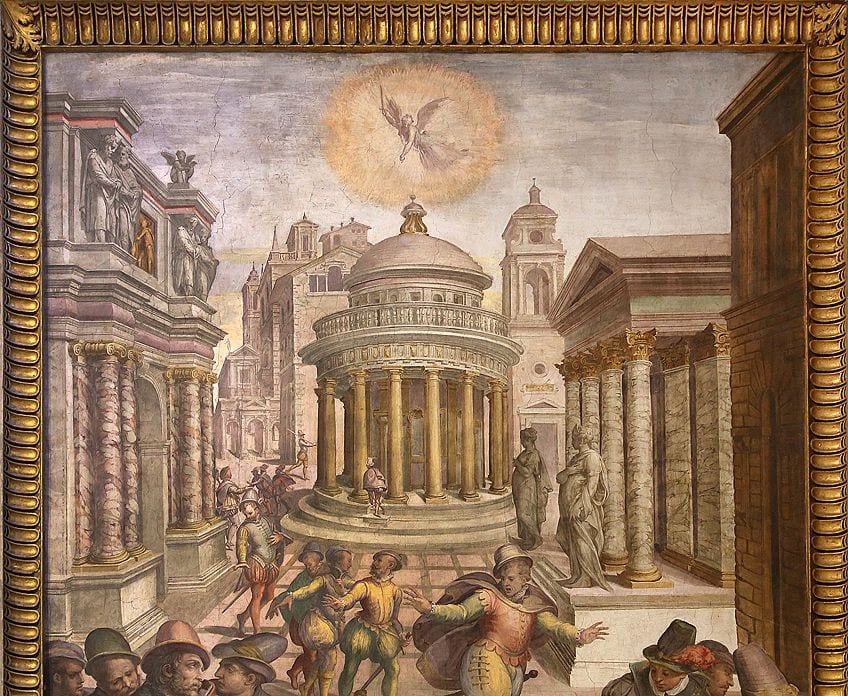
The Tempietto is considered one of the best examples of High Renaissance architecture because of its symmetry and harmony of form. It is reminiscent of classical sculpture with Doric Order columns and a circular dome.
One of the biggest undertakings was Bramante’s commission by Pope Julius II to build an all-new St. Peter’s Basilica (1506 to 1626). The new basilica was planned according to the Pope’s efforts to renew the city of Rome. It was built as a replacement of the existing Constantinian church, however, Bramante had to demolish numerous buildings to start the massive project, which gave him the nickname “Ruinante”. Bramante created the initial layout in the shape of a Greek cross with four piers as supportive fixtures.
Leonardo da Vinci (1452 – 1519)
Leonardo da Vinci was considered a genius of his time and still is. As a High Renaissance painter, he contributed more than just painting to the world of art. Known as a polymath (someone with in-depth multi-disciplinary knowledge), he was also an inventor – he drew the earliest plans for a helicopter and parachute – a designer, sculptor, and scientist, among others. He was also referred to as the first “Renaissance Man” as part of the High Italian Renaissance movement.
Da Vinci studied human anatomy extensively, seen in his famous depiction of the human form called the Vitruvian Man (c. 1485). His paintings are considered some of the most realistically portrayed depictions while still adhering to the religious subject matter.
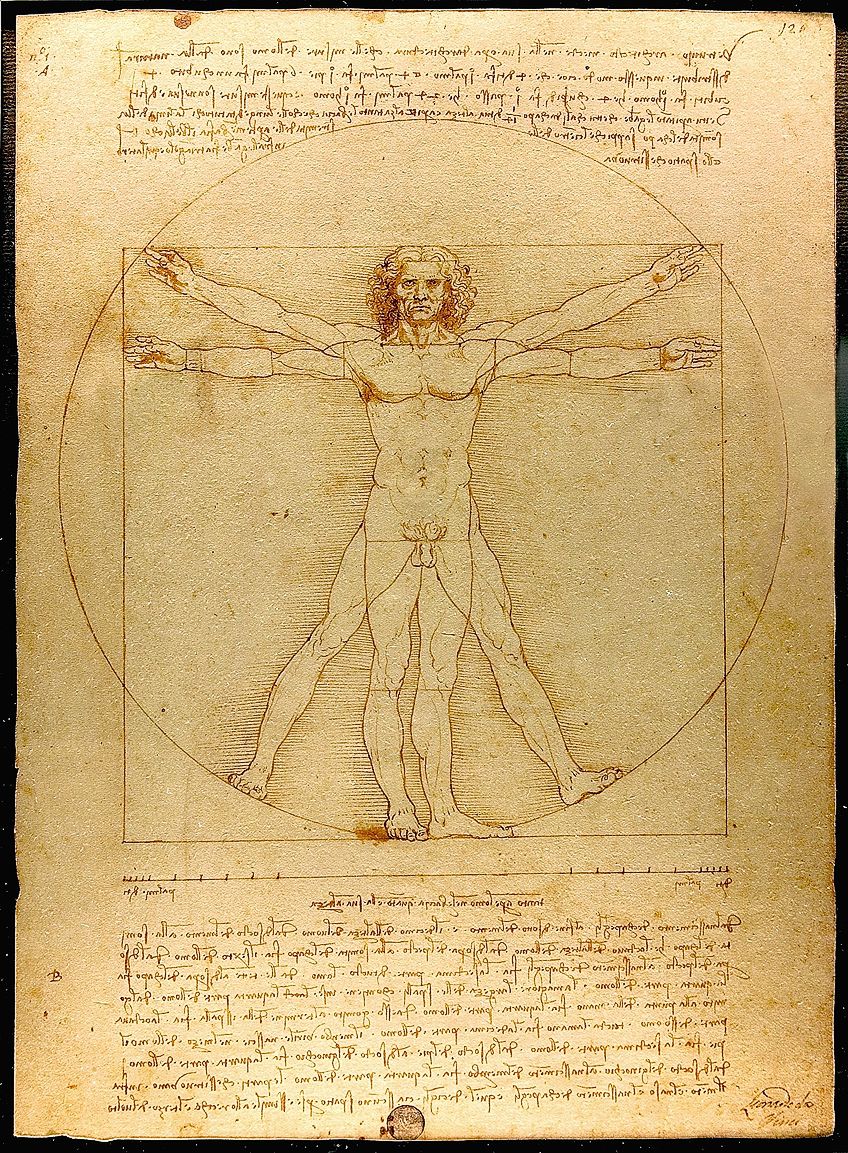
He pioneered numerous artistic techniques that heightened his realistic depictions. These techniques included sfumato and chiaroscuro, which involved creating dark and light contrasts in painting. This added mystery and depth to his compositions, as well as his captivating facial expressions seen in many of his subject matter.
Some of his famous artworks include ‘Virgin of the Rocks’ (1483 to 1486), ‘Lady with an Ermine’ (1489 to 1490), ‘The Last Supper’ (1498), and ‘Mona Lisa’ (c. 1503), among many others.
When we look at Virgin of the Rocks, the subject matter of this painting is the Virgin Mother Mary with two infants: one is Jesus Christ, and the other is John the Baptist. They are accompanied by the archangel Gabriel to the right-hand side. The environment around the figures is quite mysterious in nature, depicting various rocky, almost cave-like structures in the background with a pool of water and some foliage with rocks in the foreground.

We notice the Virgin Mary as the central figure of the composition, the pinnacle so to say, of what is referred to as a “pyramidal” layout. There is also an adept utilization of techniques like chiaroscuro in the contrasts of dark and light and sfumato, which creates a sense of depth and three-dimensionality.
Da Vinci also utilized oil pigment, which was a new medium to paint with at the time. The paint typically used during the renaissance art period was tempera (this used a binder like egg yolk mixed with pigments) and pigments just mixed with water. Using oils allowed for more detailed and smoother depictions of subject matter, as we see in da Vinci’s paintings.
The Last Supper is another masterpiece by da Vinci, depicting Christ with the 12 apostles sitting at a long table. This is based on the biblical story of the last supper before Christ’s crucifixion when he told his disciples one of them would betray him. We notice the effects of this news in the dynamism of expressions of the figures surrounding Christ. The composition also depicts Christ as the central figure, with all the other figures and architectural structures surrounding him to highlight his importance.

Da Vinci utilized a one-point perspective to achieve the above-mentioned centrality of Christ’s figure. We will notice this with the three windows in the background – the middle window directly behind Christ is almost illuminating his figure. The walls to either side of the composition also move in a similar direction towards the background. The windows open to a landscape outside, which appears seemingly paradisical, with mountains and lush-looking greenery.
Another masterpiece by da Vinci is the Mona Lisa, now housed in the Louvre Art Gallery in Paris. It is also named La Gioconda and understood to be a portrait painting of Lisa Gherardini. It shows the female figure sitting on a chair semi-sideways with her left arm on the armrest and her right arm on top.
We notice a richly detailed landscape behind La Gioconda, executed with techniques like sfumato and chiaroscuro, which creates a sense of three-dimensionality. The facial features of the Mona Lisa are also more expressive than the usual portrait paintings of the time. We notice a faint smile, which creates a sense of mystery. This smile has created curiosity over centuries, enticing us to want to know what she was feeling or experiencing when the portrait was painted.

Michelangelo (1475 – 1564)
Michelangelo di Lodovico Buonarroti Simoni, or just Michelangelo, was considered another genius High Renaissance artist. He was a painter, sculptor, and architect, especially famous for his realistic depiction of human figures. This comes from his having extensively studied human anatomy, often from dead human bodies. He was also known as being a rival of Leonardo da Vinci.
Some of his most famous artworks, including painting and sculpture, are ‘The Creation of Adam’ (1508 to 1512), ‘The Last Judgment’ (1536 to 1541), the ‘Pietà’ (1498 to 1499), and ‘David’ (c. 1504), among many others.
The paintings The Creation of Adam and The Last Judgment were a part of the Sistine Chapel’s repainting, commissioned by Pope Julius II. The former was part of the Genesis fresco paintings, and the latter was part of a commission by Pope Clement VII and then later Pope Paul III.
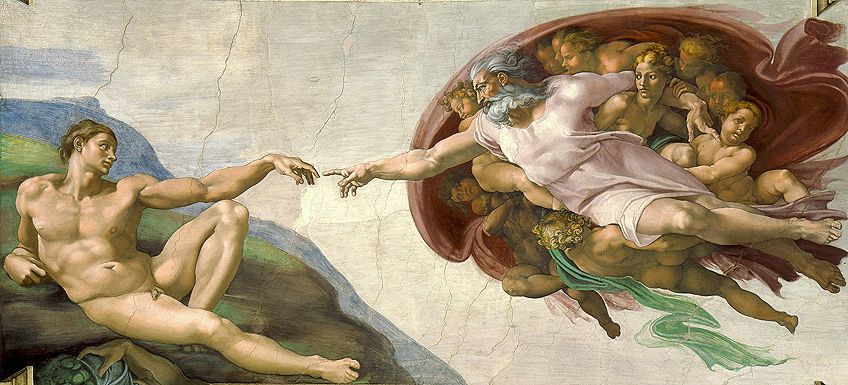
In the Creation of Adam, we see the muscular and well-defined figure of Adam on the right reaching out his left arm to touch the extended arm of God on the right. The Last Judgment shows the central figure of Christ with his arms overhead. He is surrounded by what is tallied to be over 300 other figures with the more notable Virgin Mother Mary, John the Baptist, and St. Peter.
The Pietà is one of Michelangelo’s greatest marble sculptural masterpieces. This is housed in the aforementioned St. Peter’s Basilica. It shows Christ’s dead body, after his crucifixion, held by Mother Mary. The two figures are rendered with serenity in their expressions and bodies not typically conveyed like similar sculptures before, which depicted more pain and turmoil in the figures’ expressions.
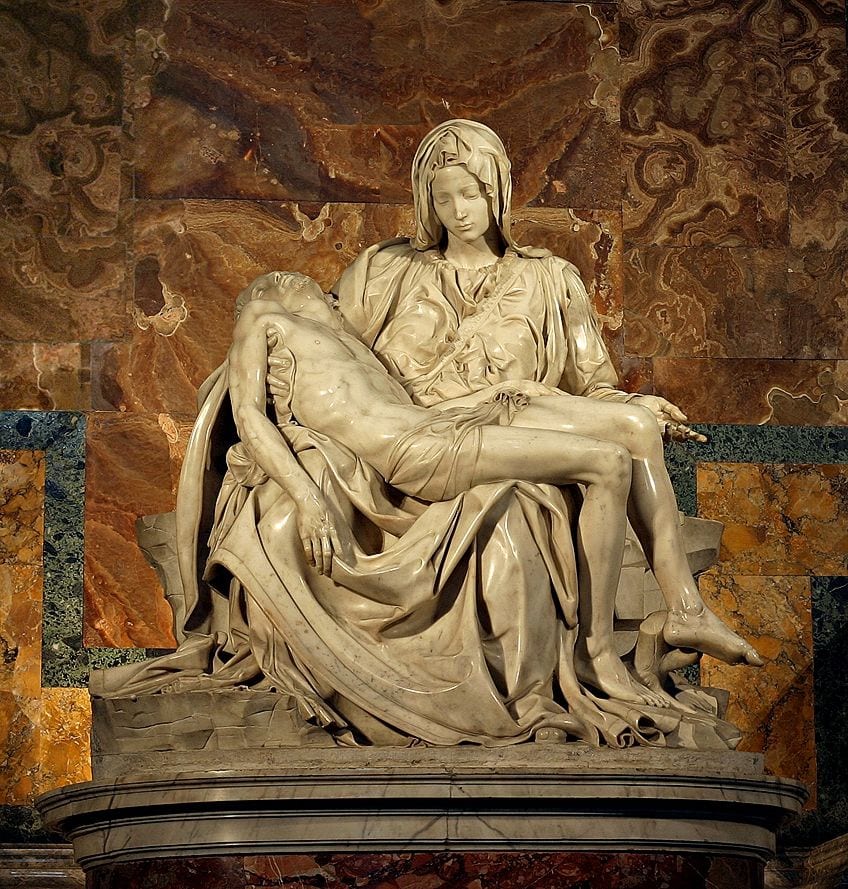
Michelangelo also depicted the sculpture in a pyramidal format, starting at the tip with Mother Mary’s head and moving downwards to the base along with her flowing robes. Her flowing robes are further testaments to the artist’s advanced attention to detail working with a medium like marble.
We also see this in Michelangelo’s David, a life-size (17 feet) depiction of the biblical figure David holding the slingshot with which he is famous for killing Goliath. What makes this statue a masterpiece of its time is how Michelangelo depicted the figure of David as near to anatomically perfect. We see this in his musculature, enhanced by the characteristic classical stance called contrapposto.
The contrapposto stance is highlighted by David standing with most of his weight on one leg in turn raising his hip. This dynamism of posture also highlights the strength inherent in the figure’s muscles as they flex from the stance. These effects all contribute to an overall naturalism typical of High Renaissance art.

Raphael (1483 – 1520)
Raphael, also Raffaello Sanzio da Urbino, was a painter and architect. He was a painter for most of his life and known for his more charming personality. He is also known for portraying an essence of easy elegance in his painting style. He was seemingly able to convey the very nature of gracefulness and proportions in his paintings.
Some of his famous artworks are depicted in the Raphael Rooms in the Apostolic Palace in the Vatican City in Rome. The rooms consist of frescoes painted by Raphael commissioned by Pope Julius II. The four rooms are Sala di Costantino (“Hall of Constantine”), Stanza di Eliodoro (“Room of Heliodorus”), Stanza della Segnatura (“Room of the Signatura”), and lastly Stanza dell’Incendio del Borgo (“The Room of the Fire in the Borgo”).
Raphael’s famous fresco, the School of Athens (1509 to 1511) is housed in the Stanza della Segnatura. This work depicts a group of prominent philosophers from the Classical era. For example, Plato and Aristotle are the central figures. We will also notice the architectural space painted around the figures, suggestive of St. Peter’s Basilica, designed by Bramante.
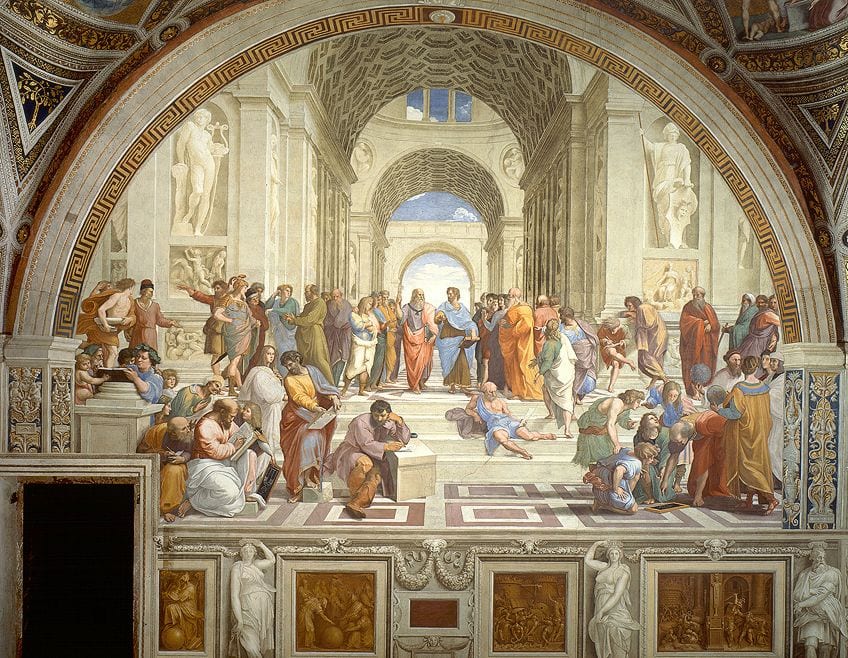
The composition is truly depicted with skillful utilization of color and perspective. Raphael painted in dulled tones, which creates more harmony for the entire composition and not merely focusing on the sole figure or object.
Furthermore, the composition appears inviting to us, the viewers; we can almost step right into the scene and join the active reflection taking place by the philosophers.
Raphael also creates perspective with the use of archways moving into the background, seemingly highlighting the two central figures. We also notice a blue sky through openings in the architecture, which gives the impression of loftiness and being in a seemingly elevated space – quite fitting as the entire composition is centered around philosophers and the faculty of thought and contemplation.
Raphael’s final artwork was The Transfiguration (1520), which depicts two biblical stories, one on the upper part of the composition and one on the lower part. The upper part of the painting depicts Christ in a brilliance of light. This refers to the biblical story of when Christ showed several of his disciples who he really was, known as the transfiguration.

The lower part of the painting is darker in color, depicting a group of people trying to help a boy who was thought to be possessed. We notice the boy held by his father. The contrast in composition clearly indicates a double narrative taking place, which is emphasized by the contrasts of light and dark colors (chiaroscuro).
Raphael passed away before he could complete this painting, however, his apprentices added the finishing touches to it. It became an influential painting for other artists like Caravaggio from the Baroque period.
Correggio (1494 – 1534)
Antonio Allegri da Correggio, or simply just Correggio, was one of the prominent painters in the Parma school during the High Italian Renaissance. The Parma school was in the northern parts of Italy in the Emilia-Romagna region. It was a small town and a small school; however, Correggio was one of the gifted painters who brought it to life during the High Renaissance.
He was best known for his illusionistic paintings, perfecting the techniques that emphasize three-dimensionality. For example, foreshortening, sfumato, and overlapping various aspects of the painting. He was also influenced by Leonardo da Vinci, Michelangelo, and Raphael.
Some of his famous artworks include the Assumption of the Virgin (1526 to 1530), housed in the Parma Cathedral. It is a fresco painted in the shape of a dome that depicts Mother Mary ascending into the heavens towards the awaiting Christ. The composition gives a swirling effect, from bottom to top, often described by the term “vortex”. We notice angels all along the swirling sides of clouds.
The closer we observe the scene, the more we become aware of certain characters, thus indicating the compositional strategy employed by Correggio.

The artist also depicted the figures foreshortened, thus creating depth in the ceiling painting when viewing it from below. It also appears as part of the ceiling’s architecture, as if this heavenly scene is really occurring, which is a testament to Correggio’s artistic skills in the quadratura technique.
This is just one example of Correggio’s astute utilization of paint and perspective to depict a biblical scene that simultaneously decorates the ceiling of the cathedral. This painting also influenced artists from the Baroque and Rococo art periods, for example, Pietro de Cortona and Andrea Pozzo.
The High Renaissance Reaches Its Low
The sack of Rome is said to have ended the High Renaissance. This occurred in 1527 when the Holy Roman Emperor, Charles V, infiltrated the city and destroyed most of it. Prior to this, the deaths of Leonardo da Vinci and Raphael also dulled the artistic luster that lit up the High Italian Renaissance.
The art movement called Mannerism came after the evolution of the High Renaissance, around 1520 CE. The Mannerists moved away from the classical ideals so valued by High Renaissance artists. While there were many more High Renaissance artists placed within a critical and discovery-driven time in Europe, the great artists mentioned above became primary exemplars of art that would last for ages to come.
The High Renaissance continues to light up the world with its artistic splendor. And just as this movement so adeptly conveyed classical ideals, beauty, harmony, Humanism, and the innovations of science in its art, it similarly stayed with the world just like one of its ceiling paintings, giving us the impression that it is wholly real and we can step into it at any moment, decorating while educating.
Take a look at our High Renaissance art webstory here!
Frequently Asked Questions
When Did the High Renaissance Happen?
The High Renaissance occurred after the Early Renaissance. It was believed that the High Renaissance happened during the 1490s when Leonardo da Vinci created The Last Supper. It lasted until around 1527 when the Holy Roman Emperor, Charles V, sacked the city of Rome.
What Were the Main Techniques During the High Renaissance?
The High Renaissance utilized techniques developed during the Early Renaissance, but these were perfected to a higher degree of skill. Some of the primary techniques were sfumato, chiaroscuro, foreshortening (the focus on perspective and vanishing points in compositions), and illusionistic methods like quadratura.
Who Were the Famous Artists During the High Renaissance?
The three artists who pioneered the High Renaissance art period were Leonardo da Vinci, Michelangelo, and Raphael. They are also known as the “Big Three” and have been immortalized in the modern story of the Teenage Mutant Ninja Turtles.
What Was the High Renaissance Known For?
The High Renaissance was known as the period in the overall Renaissance period in Europe as having reached the pinnacle, or zenith, of artistic works created. These included painting, architecture, and sculpture. High Renaissance artists used techniques developed from the Early Renaissance period and perfected them.
Where Did the High Renaissance Happen?
The High Renaissance took place in Rome, under the main patronage of Pope Julius II. Rome became the cultural center of artistic production after Florence, where the Early Renaissance period mainly took place.
What Were the Main Ideas of the High Renaissance?
The High Renaissance artists believed in classical ideals of beauty and harmony. Artists also created works that were more naturalistic, depicting a deeper sense of realism in their subject matter. While they still portrayed religious subject matter, they simultaneously portrayed the beauty and anatomical preciseness of the human form in their biblical figures.
Isabella studied at the University of Cape Town in South Africa and graduated with a Bachelor of Arts majoring in English Literature & Language and Psychology. Throughout her undergraduate years, she took Art History as an additional subject and absolutely loved it. Building on from her art history knowledge that began in high school, art has always been a particular area of fascination for her. From learning about artworks previously unknown to her, or sharpening her existing understanding of specific works, the ability to continue learning within this interesting sphere excites her greatly.
Her focal points of interest in art history encompass profiling specific artists and art movements, as it is these areas where she is able to really dig deep into the rich narrative of the art world. Additionally, she particularly enjoys exploring the different artistic styles of the 20th century, as well as the important impact that female artists have had on the development of art history.
Learn more about Isabella Meyer and the Art in Context Team.
Cite this Article
Isabella, Meyer, “High Renaissance Art – The Pinnacle of the Renaissance.” Art in Context. June 11, 2021. URL: https://artincontext.org/high-renaissance/
Meyer, I. (2021, 11 June). High Renaissance Art – The Pinnacle of the Renaissance. Art in Context. https://artincontext.org/high-renaissance/
Meyer, Isabella. “High Renaissance Art – The Pinnacle of the Renaissance.” Art in Context, June 11, 2021. https://artincontext.org/high-renaissance/.


